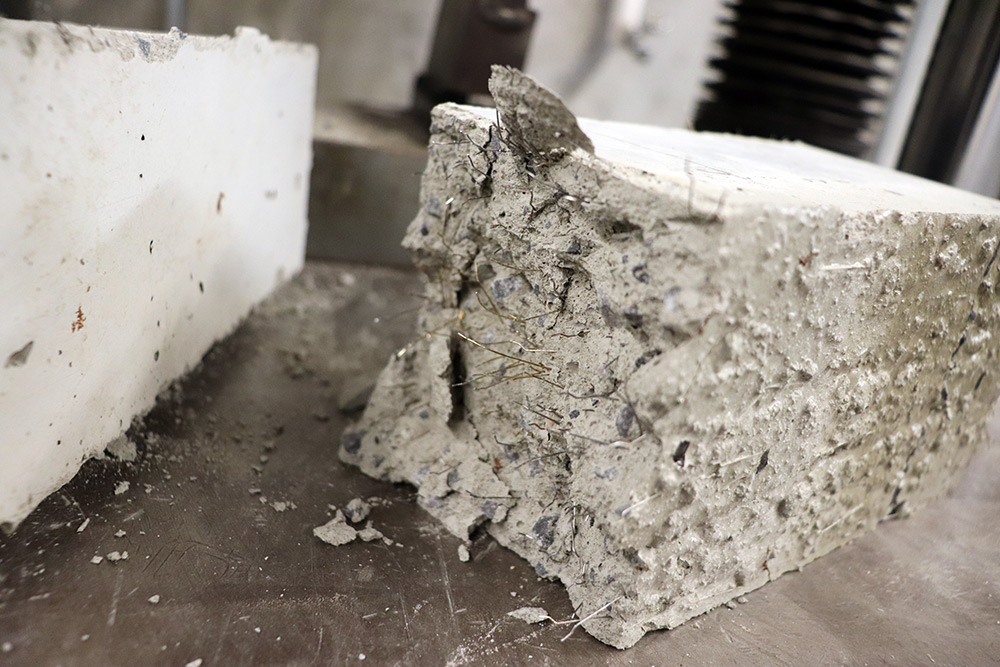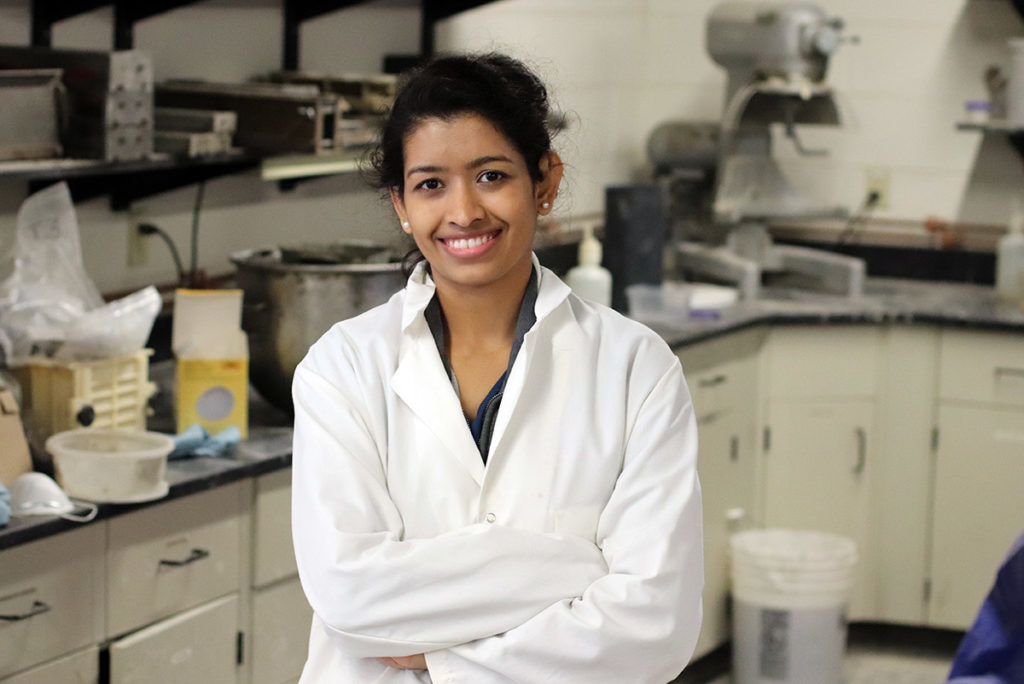Concrete is the most widely used man-made material on the planet, and the second most used material in the world after water.
It’s a composite, with aggregate materials that can be found nearly everywhere. Buildings, roads, and bridge construction projects depend on concrete for its high compressive strength of about 3,000-7,000 psi.
However, concrete accounts for a large percentage of global carbon dioxide emissions due to the way it is made. The 4 billion tons of concrete made each year is responsible for about 8 percent of the world’s carbon dioxide emissions, which is more than the entire agricultural industry and the heavily polluting aviation industry.
All of this is on the mind of UT civil engineering doctoral student Debalina Ghosh, studying under Professor John Ma, who teamed up with researchers at Oak Ridge National Laboratory and in collaboration with the Precast-Prestressed Concrete Institute.
Precast concrete is a concrete structure like a wall or a slab that is manufactured in a plant and is then transported to the construction site, instead of pouring the concrete in place at the site. She developed a new concrete formula with two main features important to the industry: it quickens the drying time of precast concrete and has a reduced carbon footprint.
Ghosh is still trying to determine the exact carbon footprint of her mix.
“I am working on a life cycle assessment of this concrete,” she said. “This assessment considers the raw material use, energy consumption throughout the manufacturing process and provides a comparative impact on environment.”
The precast system has better quality control and reuses the concrete formwork, making it a more sustainable and cost-effective option than using a form once, as is done on most construction sites.
Precast concrete reuses the formworks and provides cost-effective concrete with better quality control compared to conventional cast-in-place concrete. Ghosh’s concrete has demonstrated qualities that could double production capacity for the precast industry because it gains adequate strength in six hours, compared to several days needed for comparable concrete.
Additionally, Ghosh’s formula uses calcium sulfo-aluminate (CSA) cement, which emits 62 percent less carbon than the industry standard, which is Portland cement. This requires less temperature and grinding during manufacturing.
The drying/hardening of concrete is a chemical reaction that emits carbon dioxide, and in this case, CSA has a faster reaction in an early stage of drying. Additionally, the concrete contains slag, a byproduct material, to replace 60 percent of traditional Portland cement, thus further reducing the overall impact on the environment.
Reducing the drying time also reduces the amount of labor needed so that the condensed placement time is feasible. Additionally, Ghosh evaluated commercially available components including steel, glass, and carbon fibers and came up with a self-compacting mix that maintained its workability for 30 minutes.

She chose steel fibers to increase the flexibility of the concrete, which contributes towards its bending strength, whereas regular concrete will snap if bent. These fibers give it more durability for situations where the concrete could snap.
